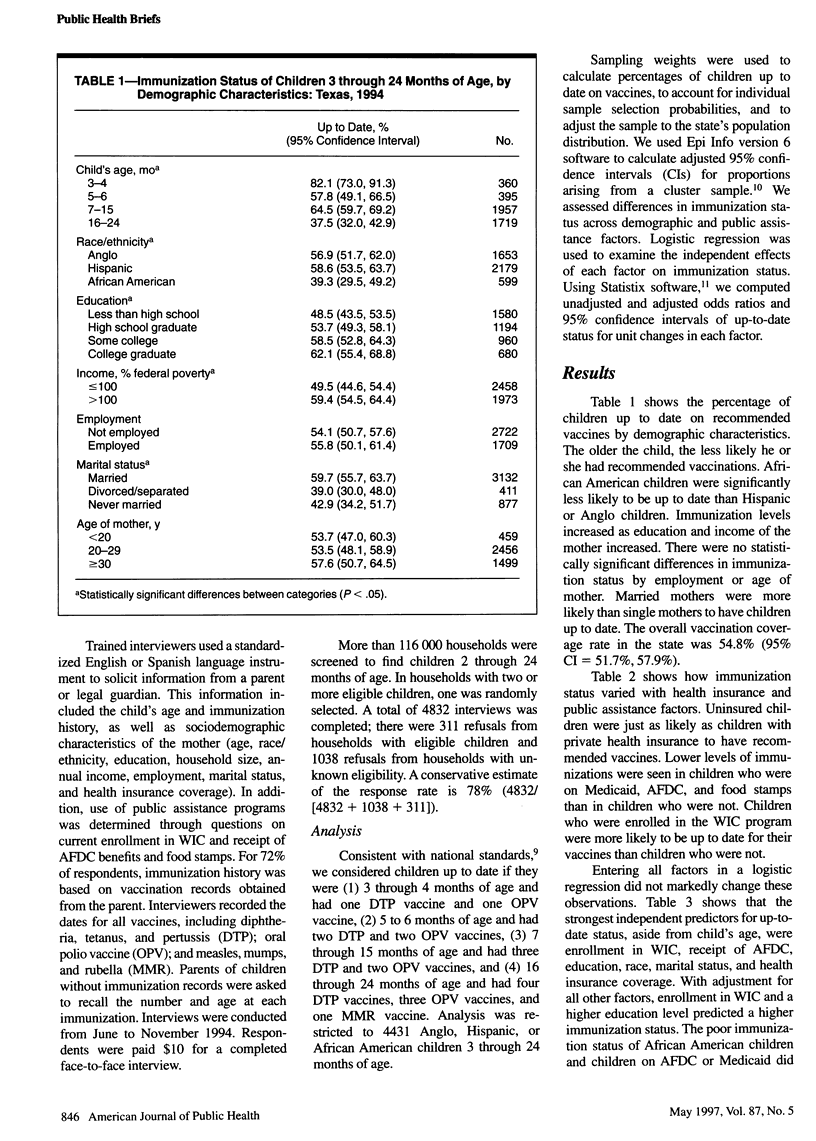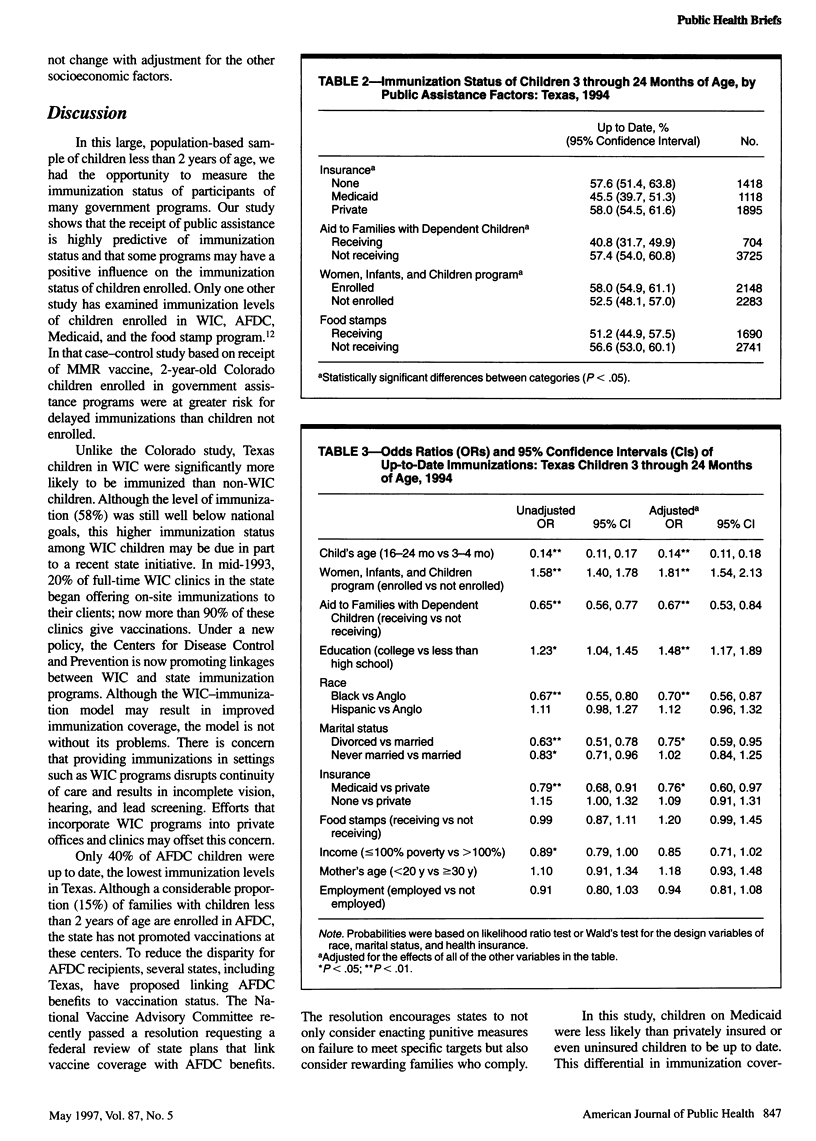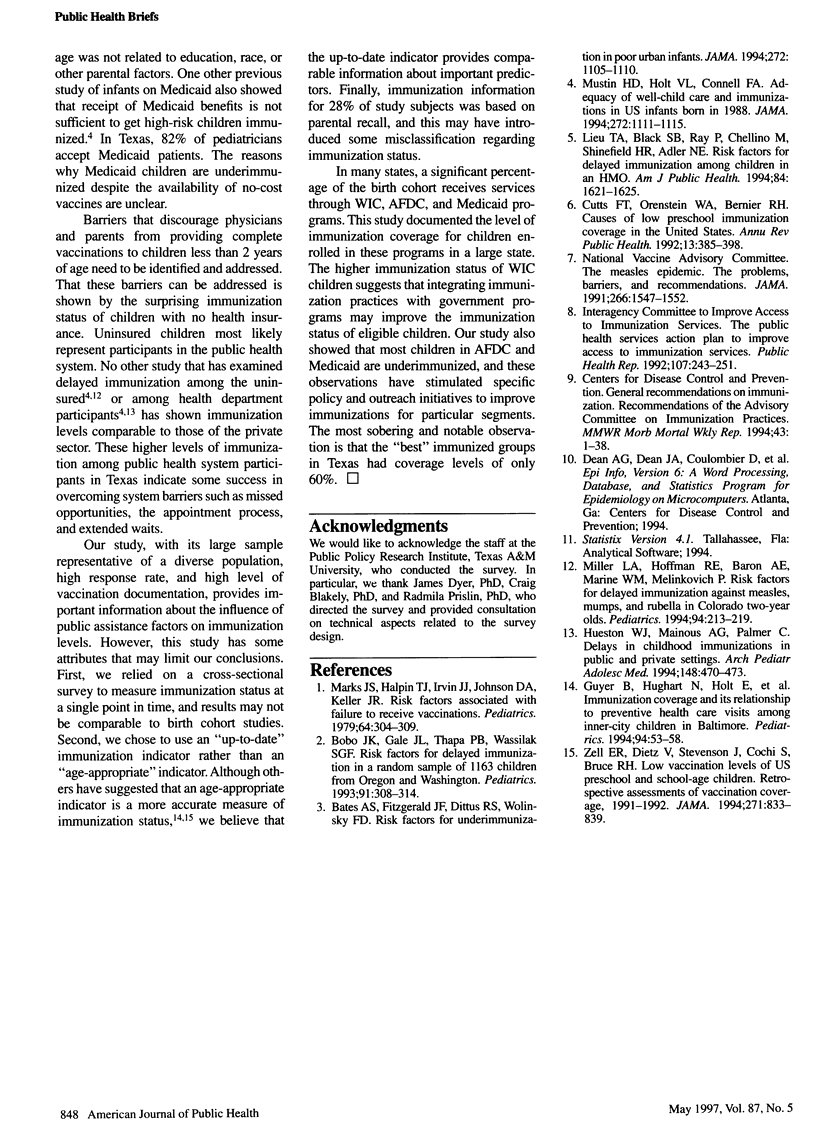Abstract
OBJECTIVES: This study examined how children's immunization status varied with enrollment in the Women, Infants, and Children (WIC); Aid to Families with Dependent Children (AFDC); food stamp; and Medicaid programs. METHODS: A statewide survey was used to determine the percentage of children less than 2 years of age who were up to date for diphtheria, tetanus, and pertussis; polio; and measles, mumps, and rubella vaccines. RESULTS: WIC and uninsured children were more likely and AFDC and Medicaid children less likely to be up to date than others. CONCLUSIONS: The higher immunization status of WIC and uninsured children suggests that integrating immunization practices with government programs may be effective.
Full text
PDF



Selected References
These references are in PubMed. This may not be the complete list of references from this article.
- Bates A. S., Fitzgerald J. F., Dittus R. S., Wolinsky F. D. Risk factors for underimmunization in poor urban infants. JAMA. 1994 Oct 12;272(14):1105–1110. [PubMed] [Google Scholar]
- Bobo J. K., Gale J. L., Thapa P. B., Wassilak S. G. Risk factors for delayed immunization in a random sample of 1163 children from Oregon and Washington. Pediatrics. 1993 Feb;91(2):308–314. [PubMed] [Google Scholar]
- Cutts F. T., Orenstein W. A., Bernier R. H. Causes of low preschool immunization coverage in the United States. Annu Rev Public Health. 1992;13:385–398. doi: 10.1146/annurev.pu.13.050192.002125. [DOI] [PubMed] [Google Scholar]
- Guyer B., Hughart N., Holt E., Ross A., Stanton B., Keane V., Bonner N., Dwyer D. M., Cwi J. S. Immunization coverage and its relationship to preventive health care visits among inner-city children in Baltimore. Pediatrics. 1994 Jul;94(1):53–58. [PubMed] [Google Scholar]
- Hueston W. J., Mainous A. G., 3rd, Palmer C. Delays in childhood immunizations in public and private settings. Arch Pediatr Adolesc Med. 1994 May;148(5):470–473. doi: 10.1001/archpedi.1994.02170050028005. [DOI] [PubMed] [Google Scholar]
- Lieu T. A., Black S. B., Ray P., Chellino M., Shinefield H. R., Adler N. E. Risk factors for delayed immunization among children in an HMO. Am J Public Health. 1994 Oct;84(10):1621–1625. doi: 10.2105/ajph.84.10.1621. [DOI] [PMC free article] [PubMed] [Google Scholar]
- Marks J. S., Halpin T. J., Irvin J. J., Johnson D. A., Keller J. R. Risk factors associated with failure to receive vaccinations. Pediatrics. 1979 Sep;64(3):304–309. [PubMed] [Google Scholar]
- Miller L. A., Hoffman R. E., Barón A. E., Marine W. M., Melinkovich P. Risk factors for delayed immunization against measles, mumps, and rubella in Colorado two-year-olds. Pediatrics. 1994 Aug;94(2 Pt 1):213–219. [PubMed] [Google Scholar]
- Mustin H. D., Holt V. L., Connell F. A. Adequacy of well-child care and immunizations in US infants born in 1988. JAMA. 1994 Oct 12;272(14):1111–1115. [PubMed] [Google Scholar]
- Zell E. R., Dietz V., Stevenson J., Cochi S., Bruce R. H. Low vaccination levels of US preschool and school-age children. Retrospective assessments of vaccination coverage, 1991-1992. JAMA. 1994 Mar 16;271(11):833–839. [PubMed] [Google Scholar]


